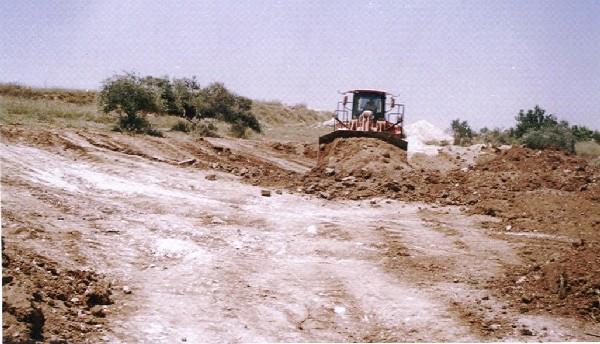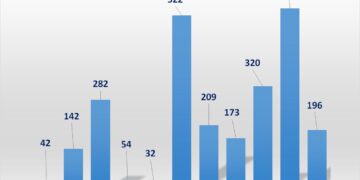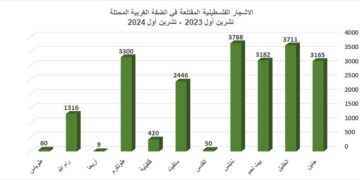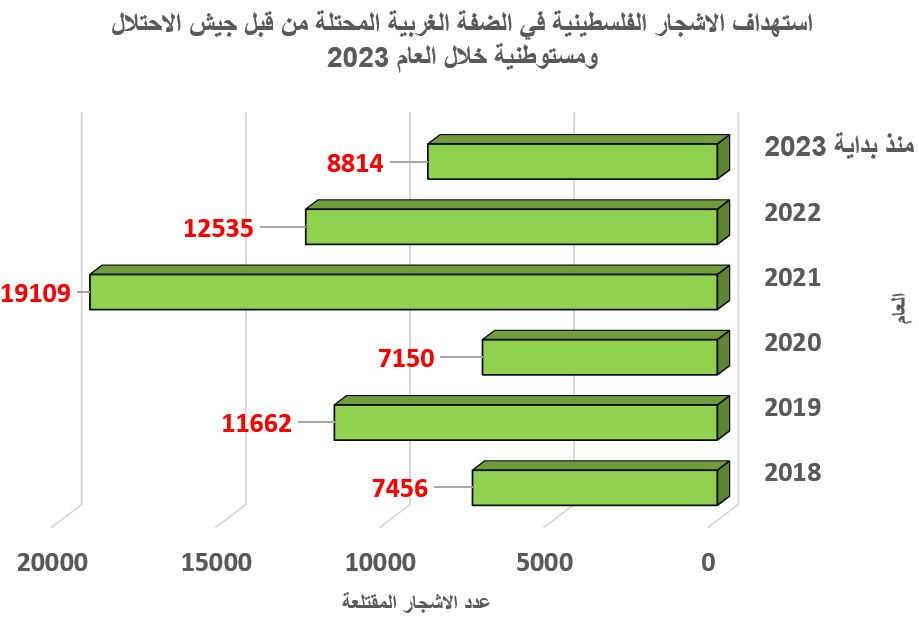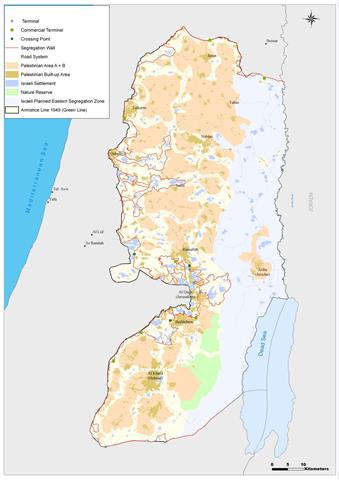Israeli bulldozers continue to devastate agricultural lands in the village of Sabastiya – Nablus governorate for the purpose of building a new alleged 'security' fence around the settlement of Shavei Shomron.
Location, population and area
The mountainous village of Sabastiya is located 12 km to the north east of Nablus city amidst a number of agricultural villages such as Burqa, An Naqura, Nisf Jubeil and Deir Sharaf. Its total population mounts to 3000 (source- Palestinian Central Bureau of Statistics -PCBS). About 82% of them depend on agriculture as main or supplementary income, especially after loosing their jobs inside Israel at the beginning of the current uprising in the year 2000.
(Map 1: location of Sabastiya and Shavei Shomron)
The village's total area is 4810 dunum of which 150 are built up area.
Shavei Shomron settlement
It was founded as a Moshav (agricultural village) in 1977 over lands taken from the three afore-mentioned villages. In 2003, it had the population of 604 settlers. Its built up area is 272 dunums and municipal area is 664 (source- Foundation for Middle East Peace).
Building restrictions
Since1967 occupation the Israeli authorities have prohibited Palestinian construction and natural expansion to the west, north and east of the village of Sabastiya under 'security' pretexts. It is worth mentioning here that 42% of Sabatiya land is marked as zone C in Oslo agreement which makes it a target for the on going Israseli land confiscation campaigns.
Israeli high court ratifies the buffer zone
Despite the fact that the whole settlement of Shavei Shormron was built on confiscated Palestinian land the Israeli Supreme Court decided to continue the construction of the fence whose path occupies 53 dunums and destroys at leas 350 olive trees, as well as separates farmers from their lands. The Court, also, acknowledges the legitimacy of setting up a 'security buffer zone' between the settlement and the fence which will lead to the separation of hundreds of dunums of lands under the pretext of providing security and protection to settlers.
Although the petitions presented to the Israeli Supreme Court affirmed the fact that the proposed fence would affect the citizens of the Palestinian villages and their sources of livelihood – olive tree- it was decided that the security of the Israeli settlers was more important than any thing else.
The legal case goes back to September, 2005, when the Israeli military issued decree number T/ 165/05 stating the expropriation of 53 dunums and 400 square meters in order to establish a buffer zone around the settlement.
(Photo 1 & Photo 2: copies of the military order and its attached map)
The petitions were presented by the Jerusalem Centre for Legal Aid and Land Defense Committees. A restraining order was issued by the Supreme Court in February, 2006 followed by the latest decision which legalized the proposed buffer zone and ordered a resumption of works at the site.
Impacts of the latest confiscation on the three villages:
1. It will separate more than 102 dunums of An Naqura agricultural lands as well as dozens of dunums of Sabastiya and Deir Sharaf lands behind the planned fence. People fear that their lands will be eventually annexed to the settlement.
2. Closing the main vital road between the governorates of Nablus and Jenin, and consequently, cutting off the geographical continuity between these two parts of the West Bank.
3. It will make it impossible for the reopening of the main entrance to the villages of Sabastiya and An Naqura which has been closed since the beginning of the Intifada in the year 2000. Because of this situation, the people of the two villages are obliged to take another longer and costly road to reach the nearest city of Nablus.
4. Depriving more than 40 families of their livelihood sources as a result of stripping them off their lands which serves as the only source of living after loosing their jobs inside Israel. Such a measure will further increase the levels of unemployment and poverty.
5. There are seven houses located 3 km to the western side of the village of Sabastiya which are expected to be totally separated from the village once the fence has been set up. Lives of the occupants of these seven houses will be under constant threat as they will live inside a big prison under the mercy of the Israeli army and settlers.
6. Further increase in the built up area of Shavei Shomron settlement at the expense of Palestinian lands in the area.
7. In addition, the following individual impacts were made:
-
-
The destruction of the back yard of the house of Mr. Mohammed Abdullah Abadi;
-
The destruction of the main water storage tank owned by Mr. Abdul Ghani Abadi which has been used for agricultural irrigation;
-
Cutting water and electricity lines off the house of Mr. Mohammed Mustafa Kiwan, as well as burying parts of his house under rubble.
-
8. So far, about 2700 long lived olive trees have been uprooted in the target area.
Prepared by
The Land Research Center
LRC


